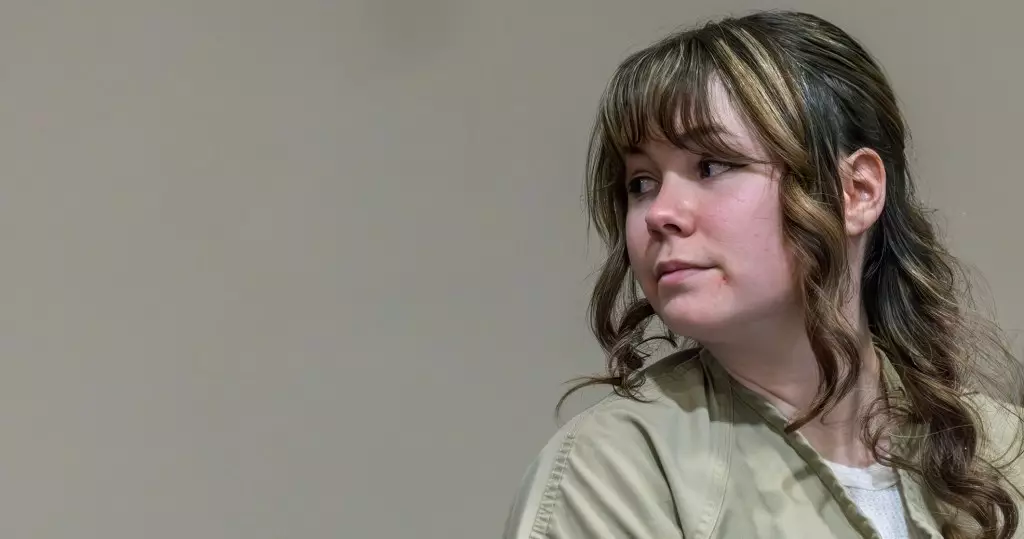The recent release of Hannah Gutierrez-Reed from prison has revived the turbulent memories surrounding the tragic shooting incident that claimed the life of Halyna Hutchins, the cinematographer for the indie Western film “Rust.” This incident in 2021 not only resulted in an irreversible loss but also sent ripples through the film industry, raising questions about responsibility, oversight, and the broader implications of safety on set. With Gutierrez-Reed’s release after serving a significant portion of her sentence, we must explore the complexities of this case and the multifaceted issues at play, beyond mere headlines.
Playing with Fire: The Role of Accountability
At the heart of this tragic narrative lies a profound discourse on accountability. Gutierrez-Reed, as the armorer, was charged with ensuring the safety protocols concerning firearms on set were strictly adhered to. The conviction of involuntary manslaughter marked a critical point in her journey, where the repercussions of her role collided with the tragic fate of Hutchins. However, it also begs the question: how can one individual bear the brunt of such a substantial tragedy when a multitude of party dynamics existed? The film’s hurried production, marred by budget constraints and crew resignations, created an environment that was fraught with risk.
While Gutierrez-Reed’s actions may have been negligent, the context behind her decisions sheds light on systemic failures within the production framework. The pressures of an indie film, often teetering on the brink of financial viability, can lead to compromises in safety measures that are simply unacceptable. Moving forward, there must be lessons learned about shared responsibility within the film industry—an industry reliant on collective effort, from directors to producers, and even crew members who play their respective parts.
The Aftermath: Gutierrez-Reed’s New Reality
As Gutierrez-Reed embarks on her post-prison life, the terms of her parole impose an extended period of monitoring and restriction. With conditions such as curfews, employment requirements, and the inability to interact with Hutchins’ family, the weight of her past actions looms large. While rehabilitative efforts are necessary, it must be stated that her exceptionally young age—just in her twenties—plays a critical role in understanding her perspective. A significant part of the discussion surrounding this case should center on whether the legal system adequately considers youth in circumstances involving severe social and personal repercussions.
Gutierrez-Reed’s experience as the stepdaughter of renowned gun coach Thell Reed adds another layer of complexity. The expectation that someone from such a background should possess unique insights into firearm safety does not always translate into practical application under severe pressure. In light of this, her situation is reflective of the broader conversation about mentorship, skill-building, and the duties of oversight within high-stakes environments.
The Role of Media and Public Perception
The media frenzy surrounding the “Rust” incident and its ensuing fallout showcases an intense scrutiny often imposed on figures in the public eye. Baldwin’s journey—though notably devoid of criminal repercussions—has not been immune, with his actions dissected through a lens of public opinion, ethics, and celebrity culture. The ostensibly bi-polar narrative of victim and perpetrator emerging from this scenario fuels significant media interest.
However, when we delve deeper, we see how the media can skew perceptions, often reinforcing divisions rather than promoting a nuanced understanding of the issues at play. The case illustrates a pivotal moment in public discourse, where accountability, celebrity, and tragedy intersect. The real challenge lies in fostering a culture where information is disseminated responsibly, with a focus on learning and improving, rather than vilifying individuals who find themselves at the epicenter of calamity.
The Road Ahead: Healing and Learning
In the wake of Halyna Hutchins’s tragic death, the film industry as a whole faces a critical juncture—one that demands introspection regarding safety, accountability, and the intricate human narratives woven into the fabric of filmmaking. Hannah Gutierrez-Reed’s case ultimately serves as a cautionary tale, urging the industry to reflect on its approach to managing risks. As she steps into a future marked by constraints and heavy consequences, her story sheds light on the importance of vigilance and responsibility—not just for individuals, but for entire systems that govern creative work. The road ahead is one of learning and healing, necessitating concerted efforts to ensure that such tragedies never repeat.
